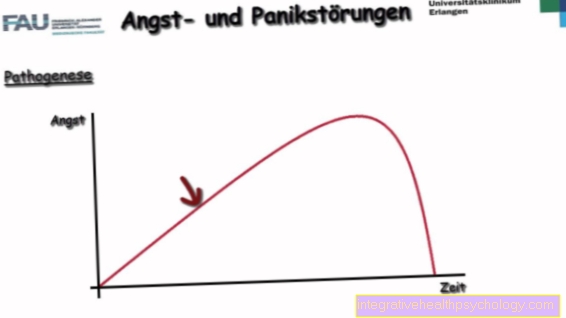Set point theory
introduction
The subject of body weight has long been a tiresome issue for mankind. Who does not know it, you step on the scales after the holidays and the number that appears in the display is anything but good mood. Countless people are anxious to keep their weight as low as possible in order to feel good. What if you could take a more relaxed approach to the subject of weight, since nothing can be changed in the long run anyway? The controversial setpoint theory says exactly that and the following article describes what can be thought of by this theory.
You might also be interested in this topic: Assessment of body weight

What is the set point theory?
The set point theory states that every person has a genetically predetermined, individual target weight. You can lose weight, be it through different diets, diet changes and more exercise, but the weight will increase again until the specified setpoint is reached again. Weight gain is also possible, but according to the original setpoint theory, it should be of a temporary nature, just like a loss.
In a modified form of the theory, however, the hypothesis is put forward that the setpoint shifts upwards in the case of permanent obesity and then there is permanent overweight, since the setpoint is now in the range of overweight. One can compare the statement of the theory with the functioning of a thermostat. A thermostat registers when the temperature no longer corresponds to the target temperature. The energy supply is then increased in order to bring the temperature back up to the target temperature. It is similarly described in the setpoint theory for body weight. A setpoint is nothing other than the predetermined target weight. If a person's weight falls, the body's basal metabolic rate is reduced, less energy is consumed and the weight is thus increased back towards the target weight.
If you gain weight, on the other hand, the basal metabolic rate is increased, more energy is consumed and the weight is reduced again and brought towards the target weight. A basic consideration that might have led to this theory is the body's natural temperature regulation. In the cold season, our body uses more energy to keep the body temperature constant. This is made possible by increasing the basal metabolic rate.
The thyroid gland is an important organ for temperature regulation; cold temperatures trigger an increased secretion of the thyroid hormone in the thyroid gland. This causes an increased basal metabolic rate in the body and helps to ensure that the body temperature does not drop in winter. The control loop for body weight is believed to be in the hypothalamus, part of the brain. It is important to note that no evidence has yet been produced in humans to unequivocally support the theory.
Further information can be found at: Assessment of body weight
What role does it play in eating disorders?
Eating disorders are a very heterogeneous group of diseases; the weight of eating disorders can either be normal, decreased or increased.Eating disorders that are associated with too little weight, such as anorexia nervosa (anorexia), could, according to the setpoint theory, be triggered by a target weight that is too low. However, it would not be correct to justify the anorexia by a genetically predetermined weight.
Anorexia is a mental illness that can be caused by many factors. Eating disorders that result in pathological overweight (obesity) would be explained by the setpoint theory with a shift in the target weight to higher ranges. An upward shift in this target weight is assumed in a modified version of the setpoint theory. A permanent, excessive energy intake shifts this target weight to areas of overweight. However, the target value can no longer be shifted downwards by losing weight, so the weight will always level off in the high range even after weight loss.
This article might also interest you: How thin can you be?
What does the set point theory mean for weight loss?
In the set point theory, losing weight is viewed as a temporary reduction in body weight. The pessimistic picture is drawn that weight loss below the genetically determined set point is virtually impossible. The set point theory denies permanently overweight people the ability to be permanently slim without going back to their original weight.
However, losing weight is also possible within the framework of theory. However, only if you have supplied yourself with excessive energy for a certain period of time and the weight is above the set point. According to the theory, however, no great effort has to be made for this, since the body brings the weight back to its target value through an increased basal metabolic rate.
You might also be interested in this topic: Lose weight by changing your diet
Evaluation of the set point theory by
The set point theory should be viewed very critically. Body weight should rather be viewed as a result of people's different living conditions. The theory denies the individual the ability to deal with his weight himself and to change something if you feel uncomfortable. Certainly there are certain genetic factors that influence the basal metabolic rate of different people.
However, there is no clear evidence that people cannot keep their body weight permanently low by changing their habits, eating healthier and exercising more. So don't be discouraged by unproven theories, a lot of diligence and discipline can result in weight loss. The reason for an increase after successful weight loss is probably more the relapse into old behavior than a genetically predetermined target weight.
Also read the article on the topic: Diet and exercise





























